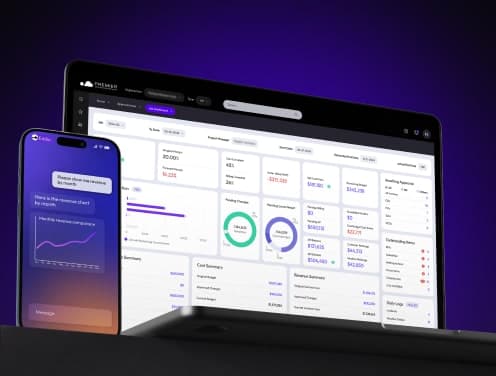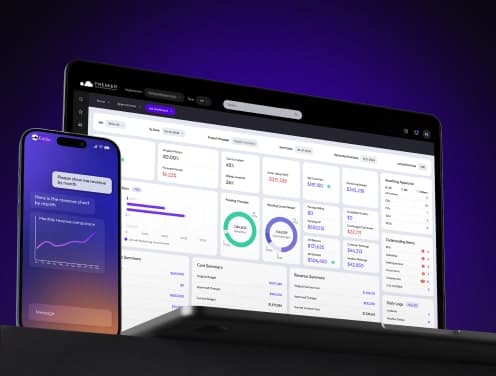
What You Should Know About Construction Project Management
Construction project management tackles all of the various parts of a project. For this reason, it’s often used as a catch-all term, oversimplifying what the process truly involves. In this guide, we’ll go over what you should know about construction project management including the most important phases and concepts.
What is Construction Project Management?
Project management for construction is the process and control of planning, coordinating, and overseeing a construction project from its beginning to its completion. Essentially, it’s the entire organization of the building of a project, including every small detail involved in the process.
Construction project management isn’t entirely different from traditional project management used in other industries. However, managing building projects typically requires a broader scope. There are simply more phases and people involved in a construction project than in most other industries (depending on the size, of course), making learning how to manage a construction project a bit of a learning curve.
For instance, construction project management always involves managing several types of professionals. This includes project owners, project managers, architects, engineers, contractors, subcontractors, city development officials, and more. Along with these titles comes each of their functions, which are also all part of managing a construction project.
Let’s take a deeper dive into the types of projects that need coordination.
Types of Construction Projects
While it appears that imagination is the limit to construction projects in the modern world, all projects boil down to just a few types. Each type has its own specific construction project details, and some project management professionals (PMPs) may choose to specialize in one or the other.
The four main types of construction projects are:
- Residential construction such as home building, remodeling, and renovation
- Industrial construction such as manufacturing plants, warehouses, and power plants
- Commercial construction such as retail spaces, office buildings, education and healthcare institutions, hotels, and restaurants
- Civil engineering construction, such as roadways, dams, bridges, airports, and water supply and pipeline systems
Obviously, there is a massive gap between homebuilding and dam construction. However, both homebuilding and civil construction project management require a process that takes them from idea to completed project. In this way, all construction projects are connected, making construction project management processes incredibly important to the industry.
Project Management Teams for Construction Projects
It’s not an exaggeration to say that there are a lot of people involved in even relatively small construction projects. Coordinating each of these people, their impacts, and their roles is part of learning how to manage a building project.
Project Owner
The project owner is the person (or committee of people) who initiates the project and secures funding to pay for the process. This could be a private owner, a developer, a corporation, or a number of other possibilities. But, at their core, they are the entity that decides to undertake a project and oversees the process from a 30,000-foot view.
Project owners don’t typically have the experience required to run a construction project on their own. For that reason, they typically hire a few people to help guide the project to completion, including the project manager, designers, and the general contractor.
Project Manager
The project manager has a very important role in building project management. Their job is to plan, coordinate, budget, and supervise the project throughout its lifecycle, from design to earning its certificate of occupancy.
In some instances, the PM might be hired privately, but in other instances, they may be an employee of the developer or chosen general contracting firm. Regardless of how they’re hired, they are the chief point of management on the entire project.
Design Professionals
Design professionals are responsible for creating the overall design, look, layout, and function of a construction project. They work closely with the project owner and project manager to develop a plan, including floor plans, architectural drawings, 3D renderings, and other media designed to guide the construction process.
The design professional can also play a role in the ongoing management. For example, some architects will help project owners and PMs select a general contractor. In other cases, the design professional may be part of a design-and-build firm that typically combines the design and general contracting under one entity. They also answer requests for information (RFIs) from contractors and subs and periodically perform inspections to ensure the project is on track.
General Contractor
A general contractor is the entity that signs the contract with the project owner to oversee the construction of the project. Also known as the prime contractor, their role involves:
- Collecting project bids
- Choosing subcontractors
- Ordering materials and equipment
- Scheduling the subcontractors
- Ensuring the job site is safe
- Managing subcontractor compliance
- Communicating with management personnel
- Ensuring the project stays on course
- Handling change orders
- Coordinating with inspectors
- And more
The general contractor can be a single person or a contracting firm, and this usually depends on the size of the project. Their role is incredibly important in the construction management process. They handle many of the finer construction project details.
Subcontractors
Subcontractors include the people or companies responsible for the individual trades on a project. Subs can include electricians, plumbers, HVAC contractors, masons, drywall installers, flooring installers, steel erection crews, and much more. They report directly to the general contractor, and they might even hire sub-subcontractors of their own.
Estimators
Estimators are the professionals who work for general contractors, subcontractors, and design and build firms that determine how much an aspect of the project should cost. They have an in-depth knowledge of their trade and materials and use it to determine costs, building in profitability and other hard and soft costs.
Accurate estimates lead to profitable and competitive bids. This helps not only in the hiring of general contractors and subs, but also in ensuring that the project can stay on budget throughout its lifecycle.
Materials Suppliers
As one might guess, materials suppliers are an important part of the construction project management chain. These entities provide the materials required to actually build the structure. They can be hired by the general contractor or subcontractors, and there are typically many materials suppliers on a project.
Inspectors
When it comes time to verify that certain aspects of the project were completed correctly and to code, in come the inspectors. While not essentially part of the project management team, they can serve as a resource for questions, as well as guide the deficiency correction process. The general contractor and project manager generally work closely with these folks during certain phases of the project.
The Major Construction Project Management Processes
Most projects have a process that they follow, involving many professionals with their own skill sets. The following steps will explain the overall development of a construction project.
Project Initiation
Initiation is the first process involved in construction project management. During initiation, the project management team develops a clear object and scope, taking the client’s needs and budget, as well as any regulations, into account. A project feasibility study is then conducted to ensure that the project is actually possible given the budgetary, time, and regulatory constraints.
Planning
The planning process involves developing drawings and specifications, as well as obtaining necessary permits and approvals from local agencies. Many of the remaining members of the project team are chosen during this process, such as the general contractors, subs, and materials suppliers. Material procurement is also part of the planning process.
Execution
The execution process involves the actual construction of the project. This includes everything from breaking ground to installing systems and finishes. There is a lot to manage during this process, so it’s incredibly important that the initiation and planning processes are conducted properly.
Monitoring and Control
Monitoring and control is a process that involves regularly comparing current job progress to the expected schedule and budget. It also involves communicating regularly with project owners and stakeholders to ensure that any adjustments or resolutions that need to be made are handled quickly and with clarity.
The Phases of Construction Project Management
A project can be broken down beyond the construction management processes, isolating important steps into individual phases. The main phases of construction are pre-construction, design, procurement, construction, and post-construction. Breaking the project management of construction down into these milestones helps control variables and planning processes to keep the project on track.
- Phase 1: Pre-construction
- Pre-construction involves defining the project’s scope, conducting feasibility studies, choosing a site, determining the budget, and securing financing.
- A design firm is typically chosen during this phase.
- Phase 2: Design
- The design phase involves the creation of the conceptual design as well as tailoring the concept to the project owner’s needs, tastes, and budget.
- Schematic designs are created next, including elevations, renderings, floor plans, and building systems. Any engineering work is also conducted during this stage.
- Permits and approvals will be obtained during this process.
- The general contractor is typically chosen during this phase, as well.
- Phase 3: Procurement
- Procurement involves putting the project out for bid and awarding the different contractors to subcontractors and suppliers.
- Initial material and equipment purchases are made during the procurement phase.
- Phase 4: Construction
- The construction phase involves site preparation and actually building the structure.
- Mobilization occurs at the beginning of the construction phase, getting the construction crews and equipment on site.
- The process is closely monitored and assessed by the project management team for quality and safety.
- Progress reporting records the current state of the project to ensure that it’s on schedule.
- Phase 5: Post-Construction (Closeout)
- Project closeout involves the completion and handover over of the project to the project owner.
- Final inspections are performed to ensure that the work is to spec and code.
- Punch list items are addressed and resolved.
- Important documents such as as-builts, warranties, and manuals are collected and handed over to project owners.
Managing the Construction Bidding Process
After projects are designed, they typically go out to bid. Bidding is the process of collecting proposals for certain aspects of the project from general contractors, subcontractors, and other parties on the job.
There are two main types of bidding processes, and they’re open bidding and closed bidding. Open bidding is typical on public projects, where an announcement is made and all interested contractors meeting certain criteria are allowed to bid. Closed bidding is when a project team contacts specific contractors with a request for bid (or a request for proposal, RFP).
In the initial bids for the project, general contractors will submit proposals stating how much they’ll charge for the project. They’ll also submit important information such as their payment terms, timeline, quality standards, reporting and communication terms, and evaluation criteria in a statement of work (SOW).
Once the contract is awarded, the majority of the remaining bids for subcontractors are typically handled by the general contractor.
Types of Bid Selection
Selecting the correct bid is an involved process all of its own. How the bid is chosen is typically determined before RFPs are sent. The following are the most common methods for selecting the bid to award:
- Low-bid selection: Low-bid selection is chosen based on choosing the lowest bid submitted by a qualified contractor.
- Best-value selection: When a best-value selection process is chosen, the project management team compares the general contractors’ qualifications, past projects, and proposal amount to determine which GC will provide the best value over the course of the project.
- Qualification-based selection: Qualification-based selection involves comparing the qualifications of all the contractors submitting bids and choosing the one that seems the most qualified for the project.
It’s important to note that there are criteria for these bid selection processes. With low-bid selection, all contractors will have to meet a baseline set of qualifications in order to be awarded the contract. There may be lower bids, but only those from qualified contractors will be considered. With qualification-based selection, any bids that come in over budget won’t typically be considered, meaning that qualifications alone are not the only requirement. The project must still be affordable.
Contract Types for Construction Projects
In order to successfully manage a construction project, PM teams need to understand the different types of construction contracts they’re likely to come across. These contracts define how much the general contractor will get paid, how they’ll get paid, and when they’ll get paid. And since the GC also pays the subcontractors, having an in-depth understanding of how these contracts work is important to the success of the project.
Lump Sum Contracts (Fixed Price)
A lump sum contract, or fixed price, is the most basic of contracts used in the construction industry. These contracts say that the contractor will be paid a set amount of money at the completion of the project.
These contracts avoid frequent paperwork and invoices and require very little ongoing monitoring from the project manager. However, unforeseen setbacks can cost the general contractor quite a bit of money, and project owners need to set aside the full amount at the beginning of the project.
Cost-Plus Contracts
Cost-plus contracts state that a contractor will perform the work for the cost of the materials plus a fee or percentage. Payment can be made at the completion of the project or set intervals determined in the contract.
Cost-plus contracts allow for a lot of flexibility with very little risk for both the project owner and the contractor. However, they involve tracking all the costs associated with the project which can make them impractical for large construction projects.
Time and Materials Contracts
Time and materials (T&M) contracts are all about transparency. These contracts that the contractor will complete the work for the cost of materials plus a set amount for each hour of the project. The contractor tracks costs and submits receipts while also recording the number of hours per employee on the project, adds them together, and bills for the job.
Time and materials contracts are simple from an accounting perspective, but only when the project is relatively small. Multiple employees on the project with hundreds of receipts make frequent billing a challenge, and the project manager has to verify all of the costs before issuing payments.
Guaranteed Maximum Price Contracts (GMP)
A guaranteed maximum price contract can be quite similar to both cost-plus and time-and-materials contracts, with one exception: They have a capped final amount. For instance, a contractor may choose time and materials to complete a project, but state in the contract that the total billing won’t exceed $10,000. Above that amount, the contractor has to absorb the costs.
Unit Pricing Contracts
Unit price contracts have predetermined prices set for specific amounts of work or materials used. For example, 40 hours of work will have a cost associated. Or, 800 sheets of drywall will cost a specific amount.
This is a relatively simple way to bill for construction projects, though it does require verification from the project manager before payments can be issued.
Progress Billing Contracts
Progress billing is similar to unit pricing contracts in that payments are disbursed after certain phases of the project. Under this method, however, payments are issued at set percentages of completion. For example, a contract might state that 40% of the total contract price is to be paid when 30% of the project is completed. The offset percentages allow general contractors to offset the initial costs of the project while also paying subcontractors.
Retainage
While it’s not a contract type, retainage is a policy that most project owners and managers prefer their contracts to contain. This states a set amount of each payment to the general contractor is set aside and payable upon project completion. Retainage percentages are typically 5 to 10%, and once the general contractor meets all of their contractual obligations, they’ll receive a lump payment for the total withheld.
Construction Project Management Scheduling
Part of managing a construction project is putting together an efficient schedule that keeps everyone on track, without excessive overlap or downtime. Contractors should be scheduled in specific orders to avoid unnecessary delays and rework.
Gantt Charts
Gantt charts are visual representations of all the tasks involved in a construction project displayed against a timeline. Gantt charts are incredibly helpful for avoiding overlap and downtime, as all of the tasks and subcontractors involved are visually represented.
Critical Path Method (CPM)
Critical Path Method scheduling is a method that identifies the fastest most efficient route to completion. Dependent activities are determined and chained together in a logical order. Delays can be difficult to absorb, however, as a small issue affects the entire chain of activities.
Line of Balance (LOB)
Line-of-balance scheduling is a great method for repetitive projects like multiple modular buildings, high-rise buildings, office buildings, pipelines, and highways. This method offers a visual representation of a horizontal flow for scheduling, with crews seemingly leap-frogging each other throughout the schedule. As the crew completes a task, it leaps over the other trades to repeat the process at the next phase, structure, or space.
Line-of-balance scheduling is only suitable for repetitive projects, but it can absorb delays and challenges relatively easily.
Resource Leveling
Resource leveling scheduling allocates the available resources to their wisest uses throughout the project. With this scheduling method, a survey of available resources over the course of the project is conducted, including labor, materials, and equipment. The schedule is then created using the available resources for the fastest finish, similar to critical path.
Resource leveling is a great option for keeping the project on track. An objective look at the resources and how much can realistically be done within a timeframe allows the project manager to come up with a more realistic time frame. And, if resources are being over-utilized or underutilized during the project, reallocating available resources allows the project to continue without excessive delays.
Lean Scheduling
Lean scheduling is a construction scheduling method that focuses on improving efficiency, reducing waste, and enhancing collaboration. The goal is to deliver the project with minimal waste and optimize resource utilization. Every aspect of the project is meticulously accounted for by a scheduling team, with the goal of optimizing the available workforce.
Lean scheduling’s main focus is on doing as much as possible with as little waste as possible. If everything goes as planned, the schedule runs very smoothly and the project is on time. However, this process also utilizes Just-in-Time ordering, which delivers materials and equipment just in time for the next phase of the project, and that can be difficult to coordinate.
Simplify the Process with Construction Project Management Software
With so many aspects of a project to coordinate, project management teams need construction project management tools to simplify the process. Even the best teams can streamline and amplify their processes with the right construction management software.
Construction management software can make every phase of a construction project easier. Users can complete tasks like project planning and scheduling are simpler, and managing the important documents so everyone has access to them keeps everyone on the same page. Collecting requests for information, bids, invoices, and other basic functions becomes much faster, allowing construction management teams to work faster and make better decisions.
Real-time information is also a critical aspect of construction management software. Most programs offer a dashboard that allows users to see the exact status of their projects at that given moment. They can access budgets, timelines, and daily reports to check on the progress of the project. Users can also communicate in real-time with stakeholders, building project managers, and other personnel to ask questions and follow up on tasks.
Construction management software also takes over some of the more mundane, error-prone tasks, improving efficiency, and allowing staff to handle other tasks. The software can receive electronic signatures and approvals, make job-wide adjustments to budgets, and automate much of the data entry required. It also organizes drawings, creates change orders, and just generally makes life easier for management staff.
There’s A Lot To Project Management
A lot goes into managing construction projects. From deciding on whether the project is feasible, hiring designers, and finding a general contractor to managing all the phases moving forward, PM teams have a lot to handle. But, with a good team, the right software, and plenty of planning, even massive projects can be tackled quickly, safely, efficiently, and on budget. Learn more about how Premier Construction Software can help you manage your projects by setting up a free demo today.





















